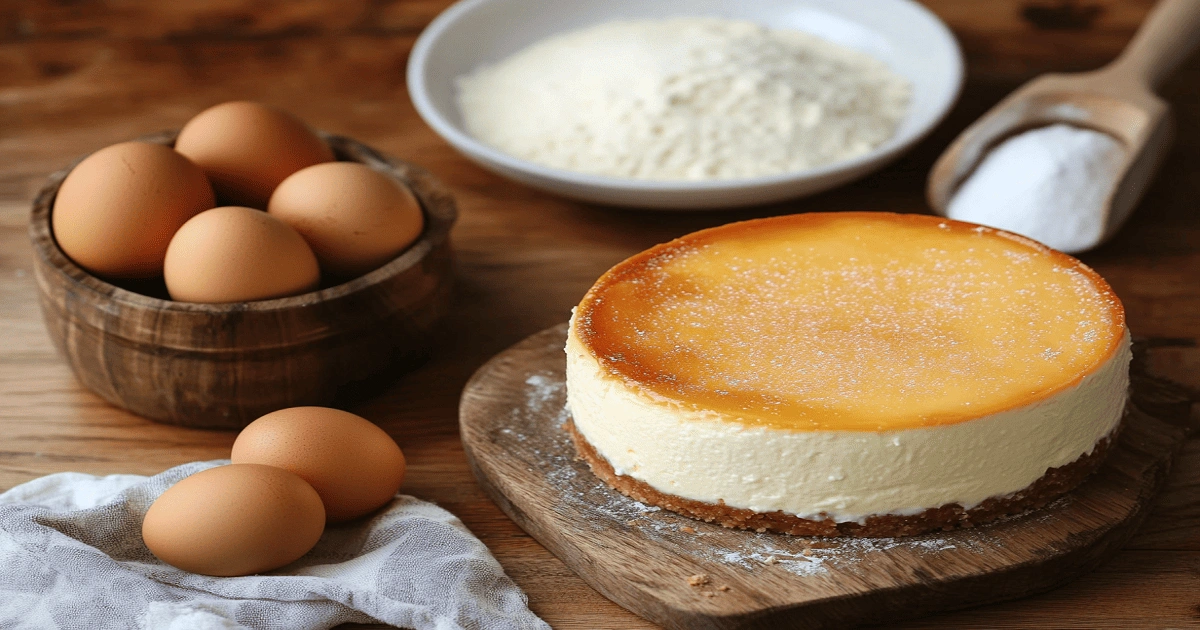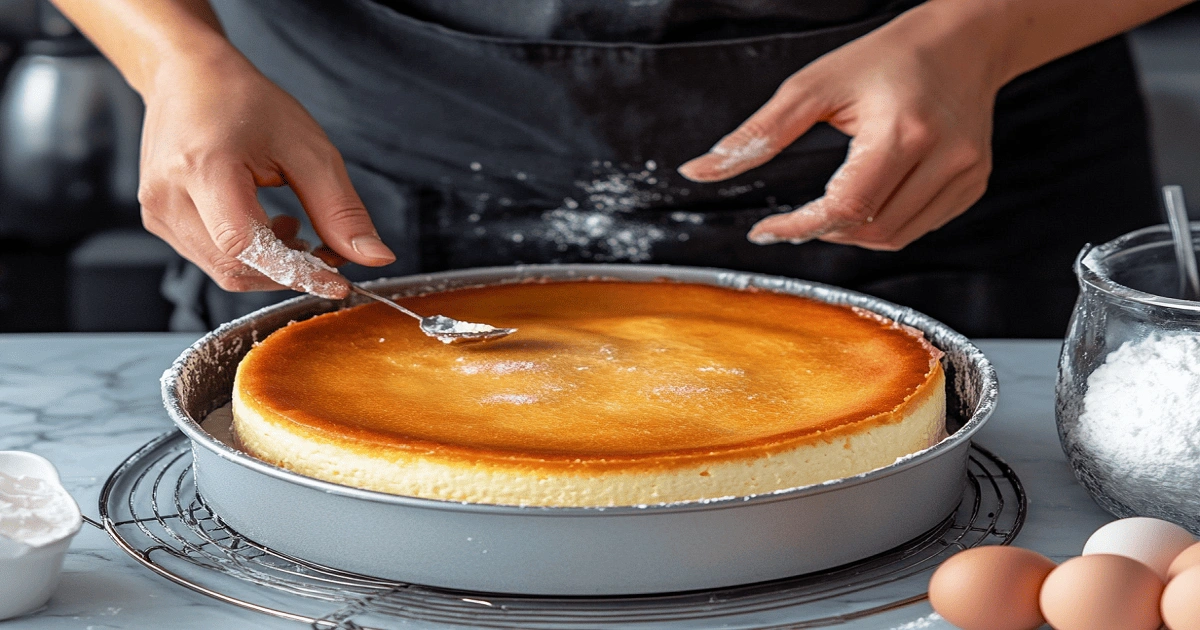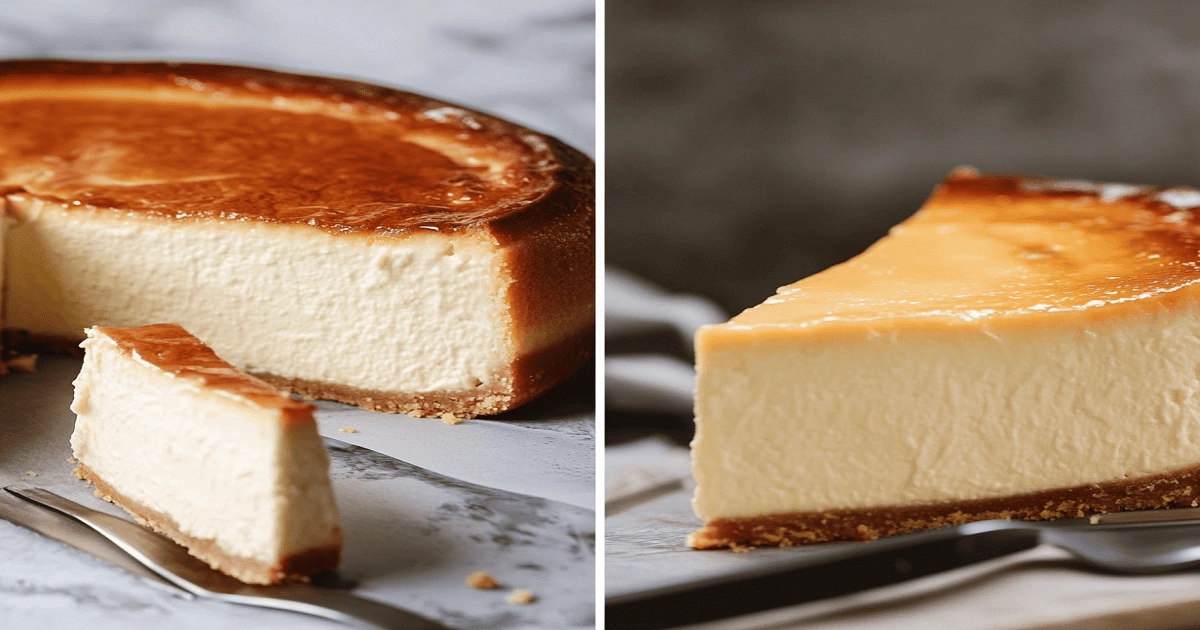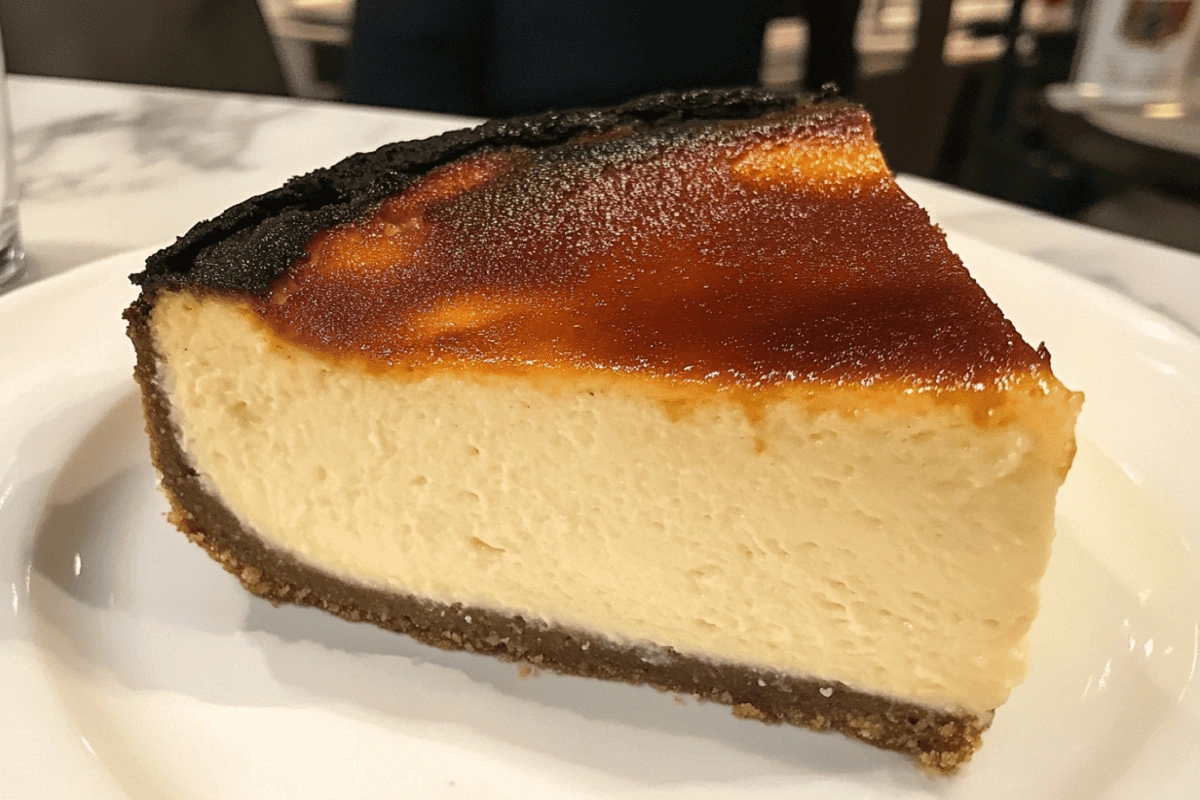Have you ever tasted a dessert so unique that it made you pause, savor, and smile? That’s exactly what is so special about Basque cheesecake. With its signature burnt top and silky, custard-like center, this iconic treat defies every traditional cheesecake rule—and that’s precisely why it’s adored across the globe.
Born in the culinary heart of San Sebastián, Spain, Basque cheesecake has made its way from humble beginnings in a rustic tavern to the menus of Michelin-starred restaurants and home kitchens worldwide. Its appeal lies not just in how it looks, but in how it makes you feel: comforted, surprised, and a little nostalgic all at once.
Unlike the dense and ultra-sweet versions you might be familiar with, Basque cheesecake is remarkably light, balanced, and sophisticated. It’s crustless, boldly baked at high heat to achieve a deeply caramelized top, and it melts in your mouth with each bite. Simple yet luxurious, it’s a dessert that invites curiosity—and delivers pure satisfaction.
This is the story of why Basque cheesecake isn’t just dessert. It’s an experience.
The Origins of Basque Cheesecake
Basque cheesecake first appeared in the Basque Country of northern Spain in the 1990s, specifically at the renowned La Viña bar in San Sebastián. This small tavern, tucked among cobblestone streets, would unknowingly birth a culinary phenomenon.
The cheesecake wasn’t born of perfection but embraced imperfection—burnt top, cracked edges, and all. It broke every traditional cheesecake rule—and we’re all grateful it did.
To explore more about the rich culinary background of San Sebastián, visit nationalgeographic.com, the official tourism guide to the region.
What Is So Special About Basque Cheesecake?
Let’s break down the elements that make this cheesecake a standout:
-
Crustless and fearless: No graham crust in sight.
-
Burnt but beautiful: The signature scorched top adds depth and flavor.
-
Custardy texture: Unlike its dense American cousin, this one melts in your mouth.
-
Simple ingredients: Often just five—cream cheese, sugar, eggs, cream, and flour.
-
Rich yet light: You feel full but not overwhelmed.
These features alone explain what is so special about Basque cheesecake, but the magic lies in the balance of simplicity and decadence.
The Iconic Burnt Top: Culinary Mistake or Genius?
Many first-timers assume the burnt top is an error. In reality, it’s the secret weapon. The high-heat bake causes caramelization on the surface, infusing bittersweet notes that contrast beautifully with the creamy interior.
Why the Burnt Top Works:
-
Adds visual drama
-
Balances sweetness with a touch of bitterness
-
Creates a thin, crackly top layer that enhances texture
-
Locks in moisture without a crust
The Texture: Creamy Without Being Overwhelming
Basque cheesecake’s center is almost like a custard. It wobbles when you shake it. That’s intentional. The cake sets only slightly during the bake, resulting in an airy structure that feels like mousse and cheesecake had a delicious child.
Many people describe the experience as eating a cheesecake cloud—and they’re not wrong.
One common question is why is my Basque burnt cheesecake not smooth?, and it often comes down to overmixing or incorrect oven temperature.
Minimalist Ingredients, Maximum Flavor
Here’s what you need to create a traditional Basque cheesecake:
-
Full-fat cream cheese
-
Fresh eggs

-
Sugar
-
All-purpose flour
-
Rich heavy cream
No need for elaborate toppings, crusts, or fillings. It’s all about the essence of simplicity, making it a favorite among minimalists and professional chefs alike.
What Is So Special About Basque Cheesecake Compared to Regular Cheesecake?
Here’s a helpful breakdown:
| Feature | Basque Cheesecake | Traditional Cheesecake |
|---|---|---|
| Crust | None | Usually graham cracker |
| Texture | Custard-like, airy | Dense, creamy |
| Top | Burnt, caramelized | Smooth, pale |
| Sweetness | Balanced | Often sweeter |
| Oven Temp | High (425–450°F) | Moderate (325–350°F) |
| Presentation | Rustic | Refined |
The differences highlight not just aesthetic variations, but entirely different culinary experiences.
To dive deeper into the debate, check out this in-depth comparison of Basque cheesecake vs regular cheesecake, which details texture, sweetness, and technique differences.
Basque Cheesecake vs American Cheesecake
While both celebrate cream cheese, their techniques set them apart.
-
Baking Technique: Basque cheesecakes are baked at much higher temperatures. This gives them the signature burnt look and runnier center.
-
Mouthfeel: American cheesecakes are firm and dense. Basque ones are lighter, with a velvety texture.
-
Flavor Profile: The caramelization in Basque cheesecake introduces slight bitterness that’s absent in American varieties.
San Sebastián vs Basque Cheesecake: Same, But Not
The names are often used interchangeably. That’s because San Sebastián is the birthplace of this delight. However, some variations now exist globally that take creative liberties.
-
Some add matcha or chocolate.
-
Others use mascarpone or ricotta.
-
But the original San Sebastián Basque cheesecake remains iconic for its bare-baked simplicity.
Why Has the World Fallen in Love with It?
The viral success can be credited to:
-
Photogenic slices with oozing centers
-
Global chefs recreating it on Instagram
-
Simplicity that translates across cultures
-
Easy-to-find ingredients
Thanks to platforms like Serious Eats, home bakers from Tokyo to Toronto are crafting their versions with pride.
How to Bake an Authentic Basque Cheesecake at Home
Many people discover what is so special about Basque cheesecake the moment they bake it themselves—how such a simple process delivers such a rich result is truly extraordinary.
You don’t need a culinary degree. Just passion, a springform pan, and patience.
Basic Method:
-
Preheat oven to 450°F (232°C).
-
Line a springform pan with parchment paper, allowing for overhang.
-
Mix softened cream cheese and sugar until smooth.

-
Add eggs one at a time.
-
Stir in cream and a spoonful of flour.
-
Pour into pan and bake for 50 minutes or until deep brown.
-
Let cool completely before slicing.
Tip: The center should jiggle slightly. That’s how you know it’s perfect.
You can explore the best baking method for cheesecake to ensure the ideal balance between the burnt top and the creamy center.
Common Mistakes to Avoid
-
Overbaking: Don’t aim for a firm center. Wobble is your friend.
-
Skipping the parchment overhang: You’ll need it to lift the cake.
-
Using low-fat cream cheese: This compromises texture and flavor.
Global Variations of Basque Cheesecake
While the original remains unbeaten, modern twists include:
-
Matcha Basque Cheesecake: Earthy and vibrant
-
Chocolate Swirl Versions: Rich and indulgent
-
Mini Cheesecakes: Perfect for portion control
Yet purists argue that less is more when it comes to honoring this legendary dessert.
Best Ways to Serve Basque Cheesecake
-
Serve chilled for a firmer bite
-
Room temperature for ultra-creamy texture
-
Garnish with:
-
Berries
-
Whipped topping
-
Unsweetened chocolate shavings
-
Remember, simplicity is the signature here.
Pairings That Elevate Basque Cheesecake
-
Herbal teas like chamomile or mint
-
Fresh fruit like figs or berries
-
Light espresso
-
Sparkling mineral water with citrus zest
These accompaniments bring out the tangy cream cheese notes beautifully.
Restaurants Known for Basque Cheesecake
If you want to experience the real deal:
-
La Viña (San Sebastián, Spain) – the original
-
Etxebarri (Basque Country) – Michelin-starred version
-
Lady M (NYC & Asia) – modern twist on tradition
-
Pâtisserie Sadaharu AOKI (Tokyo & Paris) – fusion versions
What Makes a “Perfectly Imperfect” Slice?
The best Basque cheesecake isn’t flawless—it’s alive:
-
Cracks are welcome
-
Burnt tops are expected
-
Slight jiggle means it’s ready
-
No two slices look the same
Its rustic charm is part of what makes Basque cheesecake so lovable.
Why Chefs Swear By It
-
Effortlessly elegant
-
Works with minimal tools
-
Encourages culinary creativity
-
Feels luxurious with just five ingredients
Many chefs say it brings them closer to their roots—where food wasn’t about perfection, but about passion.
The Science Behind the Burnt Cheesecake
Maillard Reaction—that’s the magic phrase.
When sugars in the batter interact with proteins at high heat, they create that deep brown, flavorful crust. It’s the same process that gives steaks and bread their golden hues.
FAQs: What You’re Still Wondering About Basque Cheesecake
What makes Basque cheesecake special?
Its simplicity, caramelized top, and custard-like texture create a dessert unlike any other.
How does Basque cheesecake differ from regular cheesecake?
Basque cheesecake is crustless, airier, and less sweet with a burnt top.
What is the difference between American and Basque cheesecake?
American cheesecake is denser and sweeter. Basque cheesecake is lighter with a more complex flavor.

What is the difference between Basque and San Sebastián cheesecake?
They’re essentially the same; the original was born in San Sebastián.
Can you refrigerate or freeze Basque cheesecake?
Yes, refrigerate for up to 5 days or freeze in an airtight container for up to a month.
Why is Basque cheesecake burnt on top?
It’s baked at high temperatures to create a rich, caramelized flavor and texture contrast.
Conclusion: The Burnt Beauty That Changed Dessert Forever
So, what is so special about Basque cheesecake? It’s the kind of dessert that doesn’t ask for perfection—it embraces its imperfections and turns them into its greatest strengths. With its deep golden-brown top, rustic appearance, and melt-in-your-mouth center, Basque cheesecake is a reminder that beauty often lies in simplicity.
This unique creation defies the rules of classic cheesecake. There’s no crust, no fancy decorations—just five humble ingredients baked at high heat to create something unexpectedly extraordinary. It balances richness with lightness, elegance with approachability, and tradition with bold innovation.
Basque cheesecake speaks to the soul. Whether you’re enjoying it at a world-renowned restaurant or pulling it fresh from your home oven, each slice offers a moment of pure comfort wrapped in caramelized magic. It doesn’t need layers or garnishes to impress—it just needs a willing spoon and an open mind.
In a world that often seeks flawless perfection, Basque cheesecake quietly celebrates authenticity. And perhaps, that’s what makes it not just delicious, but unforgettable. Because this isn’t just dessert. It’s a rich, creamy expression of culinary freedom.

